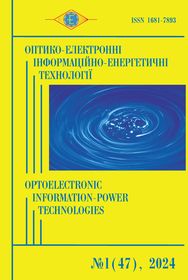Prediction of side effects of polypragmation using a graphical neural network
DOI:
https://doi.org/10.31649/1681-7893-2024-47-1-88-95Keywords:
side effects of polypharmacyAbstract
The article provides an analysis of known classes of methods for predicting side effects of polypharmacy. A new method of predicting the side effects of polypharmacy based on a heterogeneous graph neural network with blocks of attention is proposed. Based on known information about the drug, namely individual side effects and interaction with protein receptors, the network is able to predict the presence of side effects when combined with other known drugs. This information, in the form of a graphical representation of the data for each of the two drugs, is fed to the neural network, which determines the presence of a connection between the two nodes and the probability of each side effect given during training. The network, due to its inductive properties, is able to make predictions for drugs that were not used during model training, providing the ability to generalize side effect predictions for any drug with known individual side effects and target protein information.
References
Zong N, Kim H, Ngo V, Harismendy O. Deep mining heterogeneous networks of biomedical linked data to predict novel drug-target associations. Bioinformatics. 2017 Aug 1;33(15):2337-2344.
Perozzi B. et al. (2014) Deepwalk: Online learning of social representations. In: Proceedings of the 20th ACM SIGKDD international conference on Knowledge discovery and data mining. ACM. pp. 701–710.
Cheng F. et al. (2012) Prediction of drug–target interactions and drug repositioning via network-based inference. PLoS Comput. Biol., 8, e1002503.
Zitnik M, Agrawal M, Leskovec J. Modeling polypharmacy side effects with graph convolutional networks. Bioinformatics. 2018 Jul 1;34(13):i457-i466.
Nováček V, Mohamed SK. Predicting Polypharmacy Side-effects Using Knowledge Graph Embeddings. AMIA Jt Summits Transl Sci Proc. 2020 May 30;2020:449-458.
Xiao Wang, Houye Ji, Chuan Shi, Bai Wang, Yanfang Ye, Peng Cui, and Philip S Yu. 2019. Heterogeneous Graph Attention Network. In The World Wide Web Conference (WWW '19). Association for Computing Machinery, New York, NY, USA, 2022–2032.
Yang, Bishan, Wen-tau Yih, Xiaodong He, Jianfeng Gao and Li Deng. “Embedding Entities and Relations for Learning and Inference in Knowledge Bases.” International Conference on Learning Representations (2014).
Intelligent technologies for modeling surgical interventions: a monograph / O. G. Avrunin, S. B. Bezshapochnyi, E. V. Bodyanskyi, V. V. Semenets, V. O. Filatov – Kharkiv: Khnure, 2018. – 224 p.
Modern intellectual technologies of functional medical diagnostics: a monograph / O. G. Avrunin, E. V. Bodyanskyi, M. V. Kalashnyk, V. V. Semenets, V. O. Filatov. - Kharkiv: Khnure, 2018. - 236 p.
Intellectual technologies in medical diagnosis, treatment and rehabilitation: monograph / [S.V. Pavlov, O.G. Avrunin, S.M. Zlepko, E.V. Bodyansky and others]; edited by S. Pavlov, O. Avrunin. - Vinnytsia: PP "TD "Edelweiss and K", 2019. - 260 p.
Modern methods of diagnosis of respiratory-olfactory function: monograph / O. G. Avrunin, Y. V. Nosova, V. V. Semenets, V. O. Filatov, N. O. Shushlyapina. – Kharkiv: Khnure, 2021. – 150 p. ISBN 978-966-659-300-2
Downloads
-
pdf (Українська)
Downloads: 75
Published
How to Cite
Issue
Section
License
Автори, які публікуються у цьому журналі, погоджуються з наступними умовами:- Автори залишають за собою право на авторство своєї роботи та передають журналу право першої публікації цієї роботи на умовах ліцензії Creative Commons Attribution License, котра дозволяє іншим особам вільно розповсюджувати опубліковану роботу з обов'язковим посиланням на авторів оригінальної роботи та першу публікацію роботи у цьому журналі.
- Автори мають право укладати самостійні додаткові угоди щодо неексклюзивного розповсюдження роботи у тому вигляді, в якому вона була опублікована цим журналом (наприклад, розміщувати роботу в електронному сховищі установи або публікувати у складі монографії), за умови збереження посилання на першу публікацію роботи у цьому журналі.
- Політика журналу дозволяє і заохочує розміщення авторами в мережі Інтернет (наприклад, у сховищах установ або на особистих веб-сайтах) рукопису роботи, як до подання цього рукопису до редакції, так і під час його редакційного опрацювання, оскільки це сприяє виникненню продуктивної наукової дискусії та позитивно позначається на оперативності та динаміці цитування опублікованої роботи (див. The Effect of Open Access).


